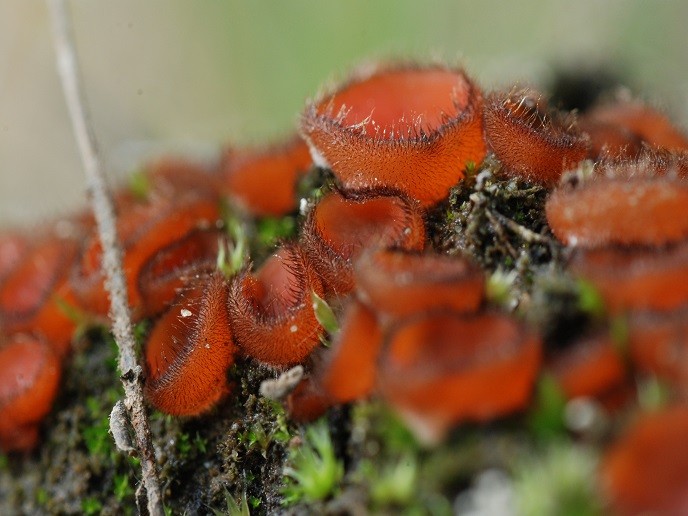Fungal enzymes catalyse a revolution in the European biotechnology sector
Plant biomass is a treasure trove of useful molecules that can be converted to added value products. Sharing the carbon backbone of fossil fuels that are derived from once-living organisms, plant biomass also has the potential to replace petrochemicals as the origin of important compounds. The EU-funded EnzOx2(opens in new window) project harnessed fungi and their oxidative enzymes (oxidases and peroxygenases), largely unexplored for commercial application, to sustainably produce added value compounds from biomass. In the process, EnzOx2 has strengthened European collaboration between research and industry actors.
A toolbox of fungal enzymes
EnzOx2 targeted reactions leading to compounds relevant to the industrially important sectors of plastics, pharmaceuticals, and flavour and fragrance (F&F). Project coordinator Angel T. Martinez of the Margarita Salas Centre for Biological Research(opens in new window), one of the largest and most prestigious research centres of the Spanish National Research Council(opens in new window), explains: “EnzOx2 partners first took advantage of the largely unexploited diversity of oxidoreductases in fungi from special habitats, and oxidoreductase genes in sequenced fungal genomes, to obtain new enzymes of interest. Then, the catalytic performance, selectivity and/or stability of the best enzyme candidates were adapted to the required reaction conditions as needed using protein engineering tools.”
A sustainable route to sustainable plastics
2,5-furandicarboxylic acid (FDCA) is one of the top 12 value-added chemicals derived from biomass because it is a renewable precursor for the production of poly(ethylene-2,5-furandicarboxylate) (PEF). PEF is the polymer expected to substitute petroleum-derived poly(ethylene-terephthalate) for manufacture of sustainable plastics. EnzOx2 delivered three routes to FDCA production from 5-hydroxymethylfurfural (HMF) or 5-methoxymethylfurfural (MMF). The team optimised the previously developed two-enzyme cascade for conversion of HMF into FDCA and proposed a new cascade involving two oxidases and one peroxygenase(opens in new window). Scientists also achieved 99 % conversion by using one oxidase in the presence of catalase to remove the generated hydrogen peroxide that was shown to inhibit the last oxidation step(opens in new window). Finally, since large-scale production of FDCA-based bioplastics will be based on MMF, a self-sustained three-enzyme cascade for this route was developed(opens in new window) and patented.
Lipid-derived molecules for pharmaceuticals, foods, and fragrances
Unspecific peroxygenases opened the door to a wealth of compounds originating from biomass lipids. Among the many outcomes are a patent for controlled one-carbon chain shortening of fatty acids(opens in new window), a novel reaction chemistry that could deliver tailor-made acids rare in nature. Regarding steroid transformations, scientists found a peroxygenase that catalyses the selective oxygenation of testosterone to obtain 4-hydroxytestosterone(opens in new window), an active pharmaceutical ingredient used for the synthesis of anti-breast cancer drugs. This reaction was recently upscaled and positively evaluated for industrial implementation. Peroxygenases also enabled the patented selective synthesis of 4-hydroxyisophorone and 4-ketoisophorone(opens in new window), of interest to both pharmaceuticals and F&F sectors. Martinez summarises: “Over the last 30 years, jobs and product revenues in the bio-based chemical industry have increasingly moved from Europe to Asia. EnzOx2 is changing the playing field. We have identified and/or engineered fungal enzymes to obtain complex molecules for specialty chemicals (nearly impossible to produce by chemical synthesis) while simultaneously modifying low-cost raw materials in energy-efficient enzymatic processes.” Thanks to project outcomes, Europe’s competitive position in the growing field of white biotechnology(opens in new window) just got a lot stronger.







